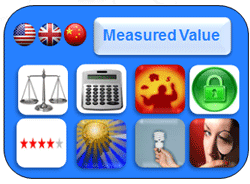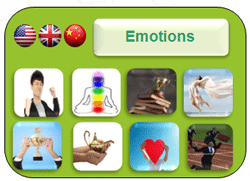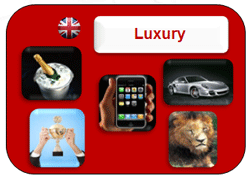Martin Oxley, Adam Hasho and Tatiana Gormley
When BuzzBack reached out to an international group of marketing and insight professionals and asked what theme they were most interested in learning more about, the ‘winner’ was value. It’s not surprising. In a marketing world where price is often the weapon of choice and where internecine price wars can easily erupt, there is an obvious need to focus on all aspects of the value equation.
Understanding perceptions and dimensions of value helps to provide a firm and defencible foundation for brand or product positioning. There are many facets to the word value, and understanding how your consumer perceives value is critical. When looking for a contemporary and useful definition of value we came across a concise and powerful quote from Warren Buffett, “Price is what you pay. Value is what you get.” Of course, he mentions value, but what is value?
To address this question we undertook an exploratory study with 1500 adult consumers in the US, UK, and China, all 18+ to explore this issue.
Associations with value
Research has shown that over 80% of human expression is non-verbal with most decision-making happening in the subconscious. This means we need to find new ways to go beyond what consumers say to understand what they are feeling. To tackle this we implemented a series of enabling and projective techniques to get ‘below the surface’. These techniques use images as catalysts, to help trigger and elicit respondents’ stories more effectively.
Following the Goatly model of universal metaphors, we aggregated over 100 images to illustrate what the word ‘value’ could mean to consumers when buying a product or service. To create their collages respondents simply click and drag images onto a blank ‘canvas,’ moving, rotating, layering and re-sizing. Each respondent’s individual collage reveals his or her personal expression of what the word Value represents. To achieve further insight into what the images illustrate, the survey included follow-up questions. By connecting these responses with visuals, associations move away from traditional text-based answers, eliciting more in-depth, less top of mind thoughts and emotions.
After completing the more qualitative analysis of how respondents describe their collages, we can also look at the responses using more quantitative techniques. For this study, we conducted factor analysis of the images to uncover unique factors or common ways respondents use images to identify a visual and graphical lexicon. By using this statistical technique, we can explore interrelationships among variables to identify common underlying dimensions (factors). Because consumers are often very intentional in their image selections, follow-up questions to the eCollage exercise, combined with factor analysis, enables us to decode image selections.
We were able to identify four unique factors used to describe value in each market. As with most factor analysis, some factors are more immediately meaningful and clearer than others. Furthermore, their interpretation is a blend of ‘art’ and ‘science’ since the pictures themselves requires holistic interpretation. However, factor analysis provides a very useful way of exploring themes in complex and ‘fuzzy’ data.
 The first factor, present in all markets, is what we call ‘Measured Value.’ Images in this factor focus on the balance between price, quality, and getting more for your money. They also reflect the journey respondents undergo to find Value – weighing options and calculating the balance between quality and price. There are market nuances within this theme. For Chinese respondents, service and reliability weigh more heavily on the process of finding Value, whereas UK respondents within this factor focus more on affordability and finding the best deal.
The first factor, present in all markets, is what we call ‘Measured Value.’ Images in this factor focus on the balance between price, quality, and getting more for your money. They also reflect the journey respondents undergo to find Value – weighing options and calculating the balance between quality and price. There are market nuances within this theme. For Chinese respondents, service and reliability weigh more heavily on the process of finding Value, whereas UK respondents within this factor focus more on affordability and finding the best deal.
 The next factor explores the emotions associated with value. Finding value brings about feelings of happiness and accomplishment after succeeding in the search for value. This success further translates into excitement and joy. In the UK, emotional feedback also includes feeling spiritually balanced and centred as a result of things ‘coming together.’
The next factor explores the emotions associated with value. Finding value brings about feelings of happiness and accomplishment after succeeding in the search for value. This success further translates into excitement and joy. In the UK, emotional feedback also includes feeling spiritually balanced and centred as a result of things ‘coming together.’
 Thirdly and mostly unique to the UK market, respondents view value in terms of the value that a product provides, regardless of price. Associations include luxury goods, as well as images associated with a feeling of achievement and self-congratulation at obtaining this kind of luxurious value.
Thirdly and mostly unique to the UK market, respondents view value in terms of the value that a product provides, regardless of price. Associations include luxury goods, as well as images associated with a feeling of achievement and self-congratulation at obtaining this kind of luxurious value.
 Lastly, all three markets also describe priceless, non-materialistic aspects of life that they most value. Respondents value their families, as well as the environment (nature). These associations indicate that linking products and services with these core values could positively affect value perceptions. For example, brands that are environmentally friendly or are tied closely to family values often have stronger value perceptions.
Lastly, all three markets also describe priceless, non-materialistic aspects of life that they most value. Respondents value their families, as well as the environment (nature). These associations indicate that linking products and services with these core values could positively affect value perceptions. For example, brands that are environmentally friendly or are tied closely to family values often have stronger value perceptions.
The stories elicited by these techniques showed that value goes well beyond questions of price vs. quality. It encompasses the emotional journey to achieve balanced value, as well as feelings of excitement, joy, and achievement when they succeed in this search. While some respondents in the UK view value in terms of pure luxury and materialism, all three markets describe aspects of value that cannot be bought. Associating products or services with this journey, as well as high-level values such as family and the environment, may help to drive consumers’ perceptions of a brand’s value.
To further explore value in terms how it made people feel, respondents were asked to participate in a projective exercise we call ‘Blobs’. Originally developed by a counselor, Pip Wilson, as a way to facilitate conversation with children during therapy, this exercise helps respondents open up and articulate their emotions. Respondents were asked to select a character from a selection that we made available that best expresses their reactions the last time they experienced ‘good value’ when acquiring a product or service. They then explained why they selected that particular character.
Results indicate that, along with feelings of happiness, excitement, and achievement, it is also important to jointly decide with a partner/respective other when acquiring products and services. At the very least, it seems important that decisions regarding the Value of products and services are motivated by what’s important to one’s family, playing back to consumers’ personal values.
 The Personality of Value
The Personality of Value
In order to gauge how people view value in a more abstract way, we also asked consumers to describe what the personality of ‘value’ would be like if it came to life as a person. Regardless of market, the most common traits are being ‘trustworthy’ and ‘dependable.’ However, US consumers are more inclined to describe value’s personality as someone they can rely on, while more UK respondents describe it as ‘caring/loving.’ Chinese consumers use a variety of unique traits, including ‘cheerful,’ ‘powerful,’ and ‘energetic’ – playing back to the sense of happiness and achievement brought up by acquiring a value product/service.
Additionally, when asked to rate the importance of a variety of attributes in determining if a product or service is a good value, top mentions are consistent with value’s personality – durability and high quality. US and UK respondents, again, stress being ‘consistent’ and being a ‘product [they] will use often,’ whereas Chinese respondents rate warranty, service, and support as more important. Consumers were also asked to suggest the top 3 words they most and least associate with value. Regardless of country, ‘quality’ is by far the descriptor most associated with value. In the US and UK, ‘cheap’ is not associated with value, whereas in China, we observe that associations with value are, once again, more focused on service, customer care, security, and being environmentally friendly.
Value Brands and Categories
Next, we asked respondents to connect value to specific brands. Top of mind brands for US generally offer big ticket items and primarily include electronics companies (Apple, Sony, Samsung), automotive manufacturers (Toyota, Honda), and big-box retail stores (Target, Walmart). Top UK brand choices are similar in nature, including Tesco, Apple, Samsung, ASDA, Sony, and Amazon.
Reasons for these brand associations playback to words previously associated with value in general/in the broad sense (quality, reliability, dependability, customer service). Interestingly, low prices are not associated with value in general, but mentioned as a reason to associate retail store brands like Tesco and ASDA with value. Likewise, while innovation is a minor factor in determining value in general, it is a key reason why electronics brands such as Apple are associated with value.
How to Achieve Value
What we have uncovered so far is that there seems to be a path to achieving value:
At a basic level, value is about quality and other literal associations. These are the ‘hygienics’ if you like. It then moves towards products/services that have value (material, products, and tangibles), followed by the need or desire to pursue value, which in turn results in a sense of accomplishment when the goal is achieved. These are the ‘motivators’.
The top level includes things that are valued by consumers such as family, nature, love, time, freedom – this is where the emotions are weaved in. Connecting brands to these higher level associations will help drive perceptions of value by creating an emotional connection with consumers.
A few questions to consider that may help you get there are:
- Functionality – the brand managers know what its key features and functions are, but do they have the right positioning? Does the brand stand out from competition – meaning is the positioning articulating the benefits in the right way?
- The insight – what is the need the brand fills? Have gaps been identified?
- The emotion – this element is harder to uncover, but is there an emotional connection?
- Intrinsic loyalty – Once a brand connects emotionally with consumers, it’s easier to ensure loyalty – to become something they value (versus the brand, for example, having value)
So far we have just presented some of the initial learning and outlined several ways researchers can explore meaning to develop a more compelling positioning or platform. We hope this provides a ‘thought starter’ for implementing different research techniques to go beyond simple associations, such as synonyms and antonyms, to deeper visual and emotional expressions.
The techniques featured were used to illustrate how they can help marketers communicate more effectively with consumers, and with their agencies, and also to understand what a brand represents in order to better target customers and prospects.
Of course the path to value is not easy. This research, however, provides some clues as to how to explore this multidimensional subject in greater depth.
Martin Oxley is Managing Director at BuzzBack Market Research, Adam Hasho is Research Analyst at BuzzBack Market Research and Tatiana Gormley is Senior Research Manager at BuzzBack Market Research


